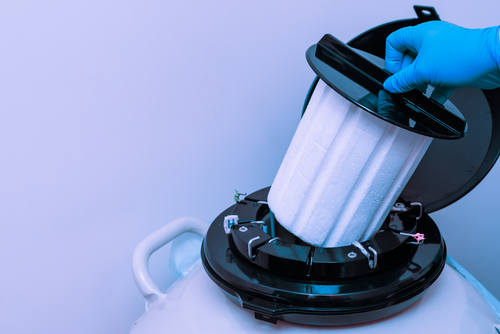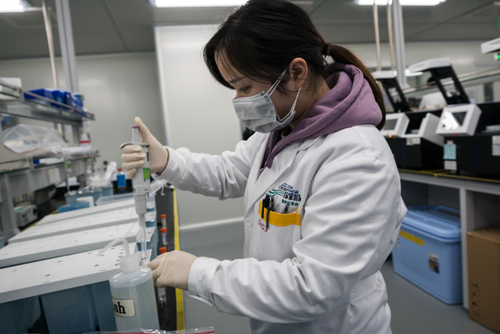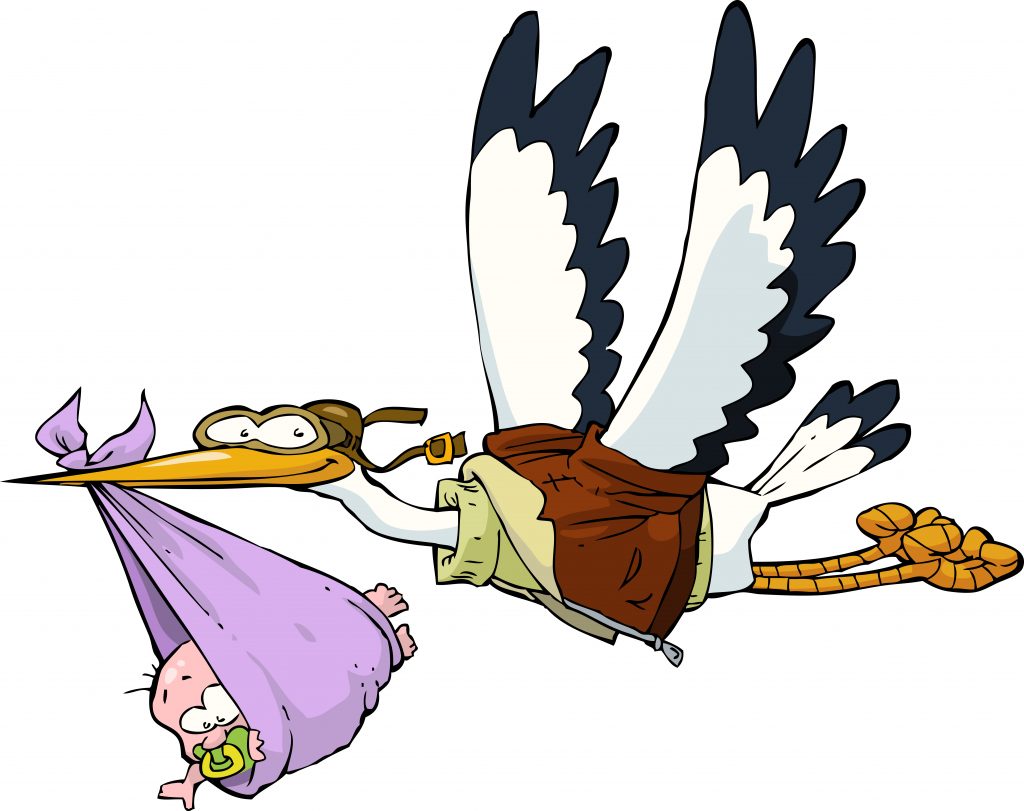America’s hottest export? Sperm
An American and a Danish company dominate the global sperm market – and both claim their supply is biggest
Ella Rasmussen’s doctors started to prod her about children when she turned 30. She was single, suffered from endometriosis, and contemplated a hysterectomy. After several years, the nudges took hold. Because she wasn’t a good candidate to freeze only her eggs, she was advised to undergo IVF and freeze fertilized embryos.
In 2016 Rasmussen, then living in Queensland in Australia, decided to take the plunge. A friend offered his services, but she worried that if she knew the father, but he wasn’t involved, she or her child could feel hurt. If she wanted sperm, she’d have to buy it.
For Rasmussen, a striking brunette of multi-ethnic background, looks or an attraction to the donor weren’t a factor. Neither was race; it would be difficult to match what she knew of her own ethnic background anyway. She wanted someone who might fit her family personality-wise. That included a love of music and a sense of humor.
In Australia, Rasmussen found fewer than 10 potential local donors. Her doctor told her that “because there’s such a small number of male sperm donors in Queensland, the quality isn’t very high, particularly as these particular men have been donating sperm for some time, and they are older generally”.
Her doctor made a recommendation: go American.
Her fertility center gave her the password to a protected site – the catalogue. It contained a mix of Australian and American men. “Go and have fun with it,” the andrologist suggested. “Invite your girlfriends around, have some wine and cheese, and choose a donor.”
Rasmussen didn’t like that idea. Instead, in the midst of the most modern method of starting a family, she embarked on the most old-fashioned: she let her father choose.
“My dating life has been kind of a running joke in the family. At that point I didn’t want to make a decision alone. I also thought it would be kind of nice to involve my father,” she said.
“He took my laptop and he logged in and he sat there looking very serious for about 45 minutes, and then he handed it back to me and said, ‘There’s only one.’” He wouldn’t tell her which, she recalled, laughing. “So I went through myself and had a look and in the end I came to exactly the same conclusion. I said the code number, and he’s like, ‘Yup.’”
For both father and daughter, the 23-year old, dark-haired American with a touch of acne was a clear-cut, one-in-20 standout.
On the 17-page file provided to clients, he wrote that he became a donor because “he wanted to spread his awesome genes throughout the world,” which, Rasmussen acknowledges, “was such an arrogant thing to say. It made me laugh because it really showed me how young he was. I felt like he was joking when he said that, like he was saying it to be tongue-in-cheek. We hope.”

Demand for US sperm is on the rise. Not just American; Danish semen is also used by women around the world. The reasons are as varied and distinctive as each country’s own regulations and approach to bioethics and business.
Sperm from the US and Denmark dominate the market because those countries currently have the most supply, experts say. It’s unclear whether their rivalry is serious or in jest, but US-based California Cryobank and Denmark’s Cryos International each insist that their sperm repository is biggest.
California Cryobank claims it is the largest sperm bank in the world by “any metric”; Scott Brown, director of client experience, noted that the firm has a pool of roughly 600 donors and a track record of 75,000 live births globally since 1977. The company has locations in Palo Alto, Los Angeles, Cambridge, Massachusetts, and New York.
In Denmark, Cryos, the superstore for Viking sperm, is the main player. “California Cryobank is definitely the largest in the United States, but worldwide, we absolutely crush them,” Corey Burke, the tissue bank director at Cryos International’s Florida outpost, told the Guardian.
“In Europe alone, we have close to 1,400 active and real donors; in the US around 200 donors,” Burke said. “We sell to over 100 countries worldwide. We own Europe. If you want sperm in Europe, Cryos comes up, always,” added Burke. The email signature on Cryos emails boasts: “The highest number of registered pregnancies in the world.”
About 90% of Danish sperm goes to other EU countries, said Karlstad University’s Sebastian Mohr, who wrote a book on Danish sperm banks.
One reason the US and Denmark are the heaviest hitters in the global sperm market: Laws allowing anonymity for donors, said Ayo Wahlberg, an anthropology professor at the University of Copenhagen.
“The repeal of anonymity in many parts of the western world totally changed the game” in the past 10 to 15 years, Wahlberg said. While most European countries don’t allow anonymity, Denmark still does. “As soon as [anti-anonymity] legislation kicks in, numbers plummet.”
California Cryobank changed its policy this year, to take only non-anonymous donations going forward. Historically, heterosexual couples have tended to favor anonymous donations and offspring whose physical resemblance wouldn’t give rise to questions about paternity. However, with lesbian and single mothers, the use of a donor is obvious, and clients and their children tend to be curious about their backgrounds.
“The concept of being an anonymous donor now is pretty hard to control, with services like 23andMe and Ancestry anyway,” California Cryobank’s Brown said. “Suggesting to a donor he could remain anonymous seemed like it wasn’t realistic.”
At California Cryobank, the current breakdown is: 308 anonymous donors; 116 “open donors”, who agree to be contacted through the bank as an intermediary; and 134 “ID disclosure”, who agree to direct contact, said Brown. In all cases, any relationship is initiated exclusively by the offspring, not the donor.
Laws dictating how many families or children a single donor can provide also affect a country’s sperm practice. For example, in the UK one donor can only endow 10 families domestically. In Spain, which mandates anonymous donation, it’s six live births (factoring in a donor’s own children).
The US has no limit to how many families can use one donor. In Denmark, one man can contribute to 12 families, maximum. But internationally, he may provide to six couples in Sweden and eight in Switzerland, and so on. “It’s not exactly illegal,” said Wahlberg. “One donor in Denmark could father 30, 50, 80 children. Who knows?”
There are other factors that affect sperm supply. In the US, Denmark and China (which has a massive sperm bank but does not export), donors are paid or compensated relatively comparable amounts (ranging from $30 to $130 per sample). In the UK, Canada, Australia and many European Union countries, donors must be “altruistic”: payment is forbidden. Travel and childcare expenses may be reimbursed.
Then there’s technology. “Testing and screening in the US is far more advanced, and there is a lot of diversity in the population who are willing to be donors, and obviously a lot of people,” said Fredrik Andreasson, chief finance officer of Seattle Sperm Bank. He said Caucasian sperm is in high demand globally, including in China and India.

A 36-year old Dutch national who works for a prestigious international organization told the Guardian she would have chosen American sperm, even if she wasn’t living in New York, because fertility treatment there is better than in the Netherlands.
“The donor market in US is larger,” the single mother, who asked not to use her name, said. “I don’t think there is always good quality control in place, but the vast choice of banks – if you have the means like I did – is good.”
For her, the most important criteria was that the donor have a post-graduate education and be open to being contacted by her child. She chose a Caucasian with a PhD who works at Nasa and appeared as a “particularly cute and happy boy” in photos. Her six-week-old son looks like her, though, she said.
The US lacks uniform regulation. “We certainly don’t have any federal level requirements around egg donation and sperm donation, save for the FDA requiring that sperm banks do contagious disease testing,” Yale sociology professor Rene Almeling said, adding that there is no required genetic testing.
“We don’t have any regulations about how often donors donate, how much they’re paid, how many children can be born from any one donor.”
The opposite is true in France, which gives birth to other issues.
In France, there is a state-run, national sperm bank. “So they know exactly how many donors they have and how often they donate and how many children are born with which birth defects, etc.,” Almeling said.
France used to require that to receive that sperm, you had to be a heterosexual, married couple. “They have dropped the marriage requirement, so now you just have to be a heterosexual couple, but you cannot be a single woman or a lesbian couple,” Almeling said.
“So France has regulated sperm donation, but it’s also written discrimination into the regulations, such that lesbians and single women often get on the train to purchase it from, say, the Netherlands.”
Through her one IVF cycle, Rasmussen was able to retrieve five eggs. Three were fertilized and are currently stored in Brisbane, where she lives.
Rasmussen knows the embryos hardly guarantee motherhood. She was told her chances of a live birth were less than 10%.
“It’s not an insurance policy really by any means. It’s just something I did that could give me a better chance than not doing it,” she said.
Having recently started a promising new job in digital marketing, and having just turned 40, she’s unsure about the future.
“Within the next year or so, I’ll have a better handle on what I’ll do going forward and whether I’ll become a mum,” she said. Still, she already has responsibilities to her three zygotes.
She joked: “I feel like their parent. I pay their rent and never see them.”

